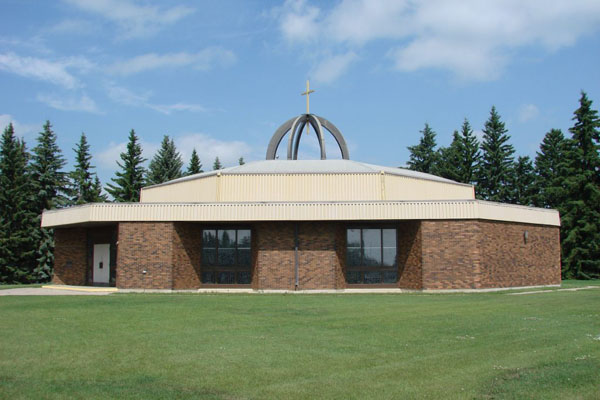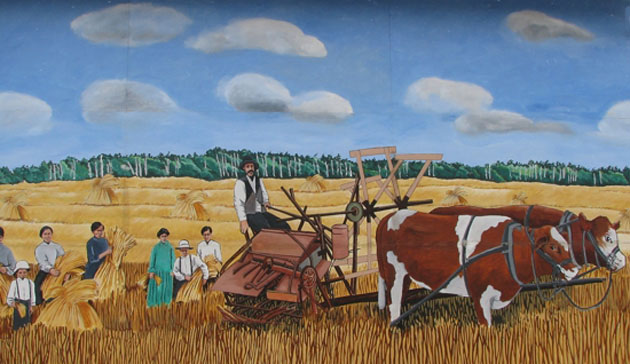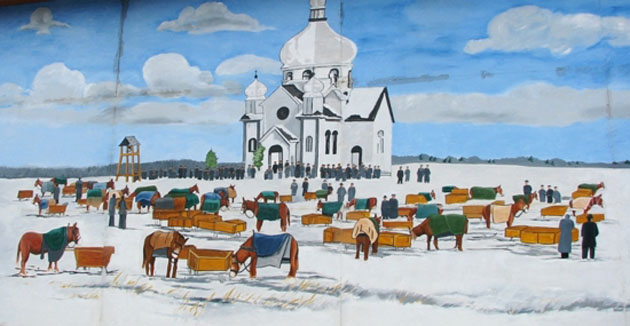Mundare
Mundare. See Map. A town in Alberta, Canada, originally named Beaverlake, situated approximately 70 km east of Edmonton. Most of its 852 (2016) inhabitants are of Ukrainian origin. A significant number of Ukrainian immigrants settled in this area in the late 19th–early 20th centuries. In 1902 it became the site of the first Canadian missionary station of the Basilian monastic order, under the leadership of Rev Platonid Petro Filias. The missionary contingent was joined in 1903 by several members of the Sisters Servants of Mary Immaculate. Mundare served as the major center for Ukrainian Catholic church activity in Alberta for many years, and until 1948 Mundare was the seat of the Basilian protohegumen for Canada and the United States. The present monastery was built by Rev Navkratii Kryzhanovsky in 1923. It housed the Basilian novitiate, printing press, and school. The Sisters Servants likewise established a novitiate and operated a school, orphanage, and hospital. The town is the chief Ukrainian Catholic pilgrimage site in Canada, and in the 1930s the SS Peter and Paul Shrine (aka the ‘Grotto’) was built as a focal point for this activity. The monastery’s library has over 20,000 volumes. Its museum and archive (est 1957) contains valuable collections of old Ukrainian manuscripts and incunabulae (much of it collected by Rev Josaphat Joseph Jean), such as the Ostrih Bible, old maps of Ukraine, rare stamps, old coins and bank notes, medals, pioneer implements, and samples of Ukrainian folk arts and crafts.
A pro-Catholic local Ukrainian People's Home was established in Mundare in the late 1910s. In the interwar period a branch of the radical Ukrainian Labour-Farmer Temple Association, which was opposed to religion, was active in Mundare. Some of the town’s (non-Catholic) landmarks include a series of murals (predominantly on Ukrainian themes) completed in 2000 and the Mundare Sausage monument that was unveiled in 2001.
Monder uchora i s'ohodni (Mundare: Yesterday and Today), published in a bilingual Ukrainian-English format in 1969 to commemorate the building of a new Ukrainian Catholic church, provides an overview of religious life in the town. A general local history appeared in 1980 as Memories of Mundare: A History of Mundare and Districts. Natalia Shostak’s (Natalia Khanenko-Friesen) ‘Local Ukrainianness in Transnational Context: An Ethnographic Study of a Canadian Prairie Community’ (PhD dissertation, University of Alberta, 2001) examines Mundare. The 2004 documentary film Journey of Hope. The Ukrainian Catholic Church in Alberta: A Brief History, directed by Harvey Spak, provides a fair amount of coverage to Mundare and the Basilian monastic order.
Andrij Makuch
[This article was updated in 2010.]



